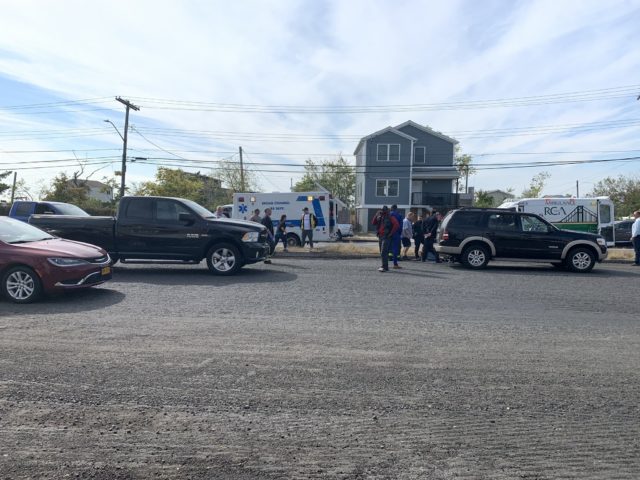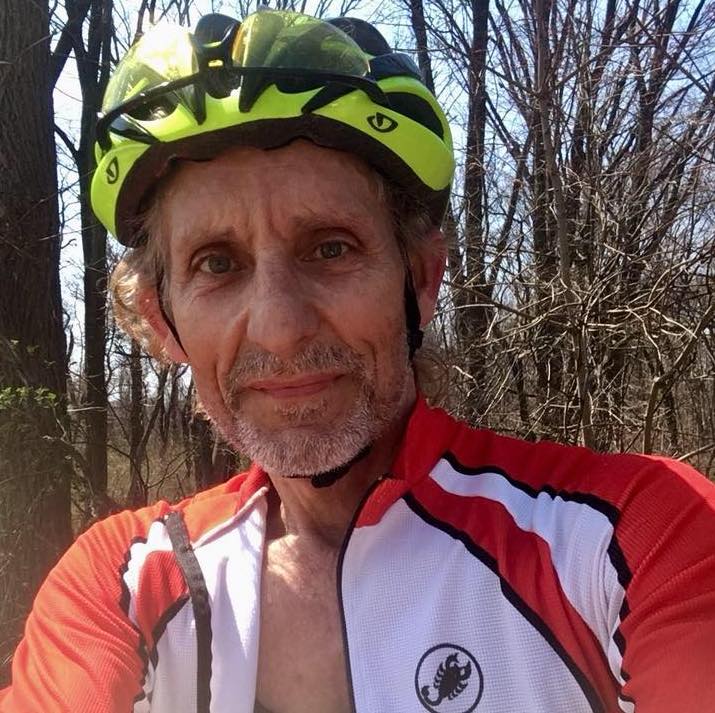In typical New York fashion, it took yet another death of a cyclist for politicians to start calling for new infrastructure to protect people who get around by bike — this time with an inconsistent supporter of street safety in Queens calling for a protected bike lane on deadly Cross Bay Boulevard one day after Bogdan Darmetko became the 25th bike rider to die in the city this year.
Council Member Eric Ulrich's sudden call for a protected lane — which would be the first upgrade to the cycling infrastructure on the roadway in at least 15 years — comes after activists have been calling for fixes on the so called "murderstrip" across Broad Channel for years.
Once the resurfacing of Crossbay Blvd is complete @NYC_DOT needs to install a protected bike lane on this stretch. Cyclists should not be put in harms way. This could have been avoided! #VisionZero
— Eric Ulrich (@eric_ulrich) October 14, 2019
Cyclist fatally struck on Queens street; https://t.co/63dzb0O1yN
Any upgrade, of course, would come too late for Darmetko, the veteran cyclist who was run down on Sunday on a speedway that is a death trap even under normal circumstances, but was made even more dangerous because the Department of Transportation had stripped away the road surface in preparation for repaving, yet had not made any provisions for cyclists who use the road to get to and from the Rockaways.
The death of Darmetko is particularly horrifying given that he was a veteran cyclist who knew what he was doing on the road. His Facebook page is full of pictures in bike gear. One heartbroken friend noted that Darmetko was "a professional biker for 40 years." Another post shows that he was still doing 60-mile rides out in the hills of Long Island even in his 60s. If New York can't keep Bogdan Darmetko alive, or show any interest in learning lessons from his death, what hope is there for the rest of us?
So many agencies and leaders failed — again — to keep the city safe:
- The Department of Transportation bears most of the blame. Cross Bay Boulevard is the main strip of Broad Channel, a remote, Wild West-style island in Jamaica Bay. The roadway links two state-operated bridges: the Joseph P. Addabbo Memorial Bridge on the north end and the Cross Bay Veterans Memorial Bridge on the south. Drivers leaving the Rockaways are treated to a 40-mile-per-hour speed limit on the Cross Bay Bridge, plus cashless tolling that allows them to hit Broad Channel at high speeds. There are few stoplights on the island, and neighbors have been calling for more.
- Matt Miner, a resident, told Streetsblog that the street design is a haven for drag racers and reckless drivers. "People drive like crazy," he said. "I just want people to know this isn't some uninhabited stretch of road. People live there, there's kids and cyclists and dogs. This is a residential area."
- Cross Bay Boulevard is also an outlier when it comes to traffic speeds. The speed limit on the street was reduced from 35 miles per hour to 30 miles per hour in 2015, but it's been stuck there since then, despite evidence that a person is about 70 percent more likely to be killed if they’re struck by a vehicle traveling at 30 mph versus 25 mph.
- The DOT has not been bothered by the threat that Cross Bay Boulevard posed to cyclists — most likely because Darmetko was the first fatality. The Bloomberg administration studied creating a more comprehensive bike network along Woodhaven and Cross Bay boulevards in 2009 report, but decided against it because "there were no bicycle accidents [sic] in the Broad Channel area during the period from 2005 through 2007." The administration said it was satisfied with the existing painted lane on each side of Cross Bay Boulevard — a decision that the de Blasio Administration has left unchallenged, despite significantly more cyclists on the roads today.
- That was a bad decision. Since January, 2016, there have been 273 crashes on the Broad Channel portion of the roadway alone, injuring eight cyclists, four pedestrians and 82 motorists. In calendar year 2018, there were 68 crashes, injuring three cyclists and 22 motorists. In December 2018, 74-year-old Waiching Chen was killed by the driver of a Ford Escape, while she was in the crosswalk at 159th Avenue and Cross Bay Boulevard.
- Finally, the area of Cross Bay Boulevard where Darmetko was killed was undergoing repairs, which start with a process called "milling," which involves tearing up the top layer of asphalt to reveal a rough, uneven, pitted, treacherous under-surface that forces cyclists to fend for themselves amid bumps and debris. Even on streets with protected bike lanes, where cyclists are supposed to feel the most comfort and safety, a Bike New York Report from July 2019 showed that DOT has never established a policy to give cyclists safe passage during re-pavings.

- The state Department of Transportation. Activists have long told state officials that the Addabbo Bridge is a death trap (and not just because of a rogue Mister Softee driver). Last summer, several cyclists called for better protection on the unsafe bridge, which features two lanes for speeding cars directly next to a painted, unbuffered bike lane. The hashtag "#murderstrip" is repeatedly used to describe the Addabbo Bridge on Twitter. Speeds are intense, as this video shows:
For your edification, @NYCMayorsOffice , here is the @NYC_DOT Addabbo Memorial Bridge, which invites high motorist speed without ANY protection whatsoever for cyclists. pic.twitter.com/EJECrPyzqc
— Radlerkönigin (@radlerkoenigin) August 5, 2018
- But the state isn't listening, claiming in a tweet this summer, "This bridge is not under NYSDOT's jurisdiction. You can address your concerns to @nyc311 and @NYC_DOT." New York City Department of Transportation responded, "Please contact NY State DOT regarding the Joseph P. Addabbo Memorial Bridge."
- The state promised this April that it would conduct a traffic study to determine how it could better protect cyclists on the bridge. But the study never happened, with a city DOT official telling safe streets activist Angela Stach in a private email, "We were not able to secure state funding in this year’s budget cycle for this study." Maybe next fiscal year, the official told her in an exchange reviewed by Streetsblog. Fiscal year 2021 does not start until next July, a long time to wait to begin a lengthy study.
This story will be updated if the major players provide more information.






